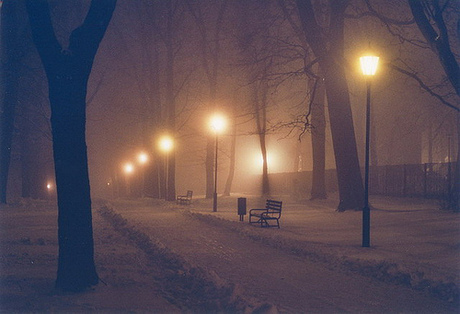Lodz Parks
The present area taken by Łódź used to be an endless Puszcza Łódzka - the Łódź Forest. Now 2378 hectares of the city are still taken by the forest. The largest compact forest complexes, lying within the town, are: Las Łagiewnicki, Uroczysko Lublinek, Uroczysko Ruda Popioły. Ancient trees, the remnants of old forests, may also be found in the oldest parks: the Piłsudskiego Park, the Poniatowskiego Park,the Źródliska Park, the Mickiewicza Park and the 3 Maja Park. In Łódź, the total area taken by over 30 parks is 503.8 hectares. Additionally, the Botanic Garden, taking 641.1 hectares, with 3.500 plant species and varieties, the Zoo, and four sport and recreation centres covering in total the area of 171.1 hectares, may also be included in the park area. 11 parks are registered as natural monuments.
The 1 Maja Park, with its vast Stefański lake, is of special interest as it offers opportunities for various types of recreation, aswell as the Rudzka Mountain, a natural rise with a panoramic view of the city and its surroundings.
The city authorities decided to establish still another public park near the St. Cross's Church in ul. Mikołajewska (now ul. H. Sienkiewicza). The gardening and earthen works were carried out in the years 18961899 following the plans by T. Chrzański and P. Hoser. The scheme stipulated a regular western part, decorated with a large flower-bed with a fountain, to be built in 1922.
After the last war it was given a new shape and added the sculptures - the personifications of the Four Seasons. The back fragment of the park, facing ul. Widzewska (now ul. J. Kilińskiego) had a more unrestrained character. In 1904 a cafeteria pavilion was erected, later on rebuilt to suit the needs of the City Gallery (now the State Art Gallery) and another building used as a café and music events, now housing the Natural Museum. Next to the park, its official name in the tsarist era being the Mikołajewski Park and, since 1914, the H. Sienkiewicz's Park, there is a former boys' grammar school, built in 1881, now the IIIrd Liceum.
The smali Matejko's Park, 2,5 ha in area, in ul. G. Narutowicza has been the only Łódź park of the French design. It was created as a private garden for the never realized residence of the Heiman-Jarecki family. The authors of the regular park were E. Ciszkiewicz and Z. Hellwig. The inner lawn, the shady hornbeam hedges, the sphere - and cone-cut yews are particularly appealing. In the place of the planned Beat there was a firecontrol water reservoir, then transformed into the pool surrounded with flower-beds and Virginia junipers.
The only architectural object in the park has been J. Pankowski's, the gardener's, house. The building refers to the popular 'manor-house style'. The long alleys were originally supposed to end up with the statues or sunclocks; their pedestals have been preserved until today. In the recent years the park has recovered its walk demolished after 1945.
Marshal Jozef Pitsudski's Park was founded in place of the suburban forest felled during the World War 1, situated to the west of the Warsaw-Kalisz railway from 1903.
The original park scheme was planned already in the early 20th century, It was finally realised in 1924-1929, while the existing older plans were corrected and supplemented by S. Rogowicz in the 1930s. The park was supposed to serve for the inhabitants' active rest and recreation and it was supplied with a number of additional attraction, like the zoo (founded in 1938), children's playgrounds - the Jordan gardens, lunapark, exhibition areas, the 'Polesie Konstantynowskie' nature reserve, sports objects, etc. The park is covered in natural and composed flora and - with its 237 ha in sizeit remains one of the largest projects of this sort in Europe between the wars. The composition of the whole used to be organised by means of the three main axes, lined with the Pennsylvania ash tree and Crimea linden, which meet radially at the crossing with al. Unii. There were two monuments that were supposed to stand at the al. Konstantynowska: to Liberty and to the Missing.
The other, commemorating the burial ground of the 1905 revolutionaries was, indeed, executed in the 1920s. Destroyed by the Nazis, it was reconstructed in 1975 as a monumental the Revolution Memorial. The park was never fully completed before the war. It was further expanded in 1971/72 where a beautiful botanical garden according to H. Tomaszewski was founded in its south-western part. From the west the park borders the Łódź Sports Club with its stadium pitch and a gymnasium.
Today, eighty years having passed since its earliest beginnings we can fully appreciate its values and importance in the life of the city. It still is a great attraction for the people, and it seems, there is no person who would not have strolled along its shady alleys but once.



